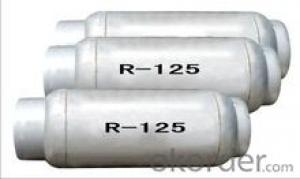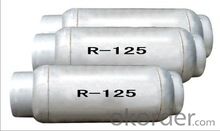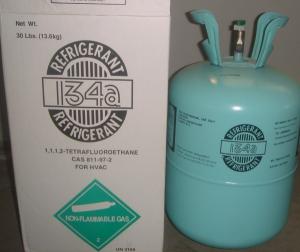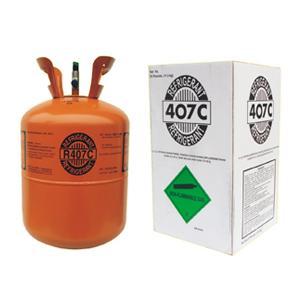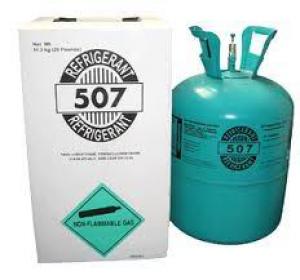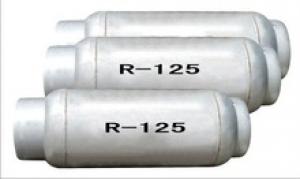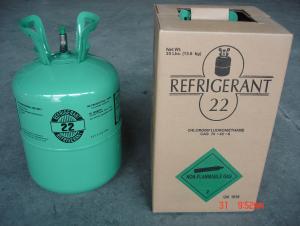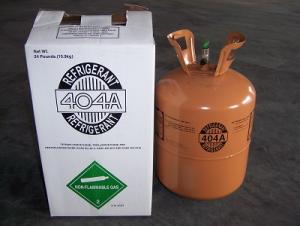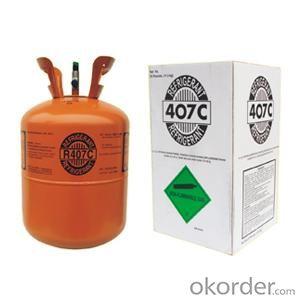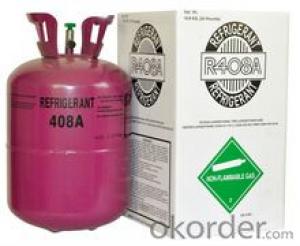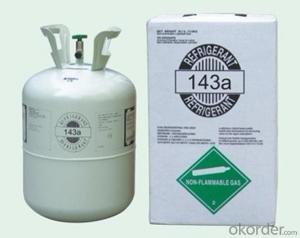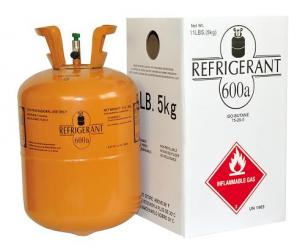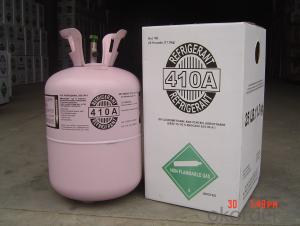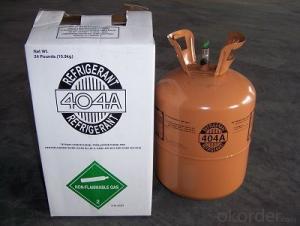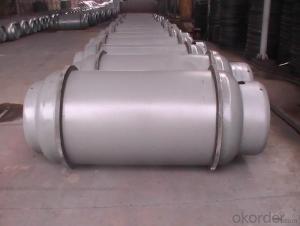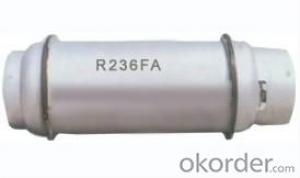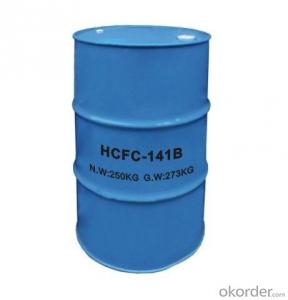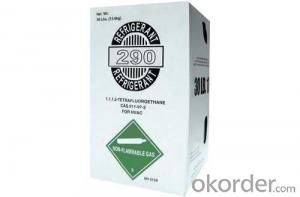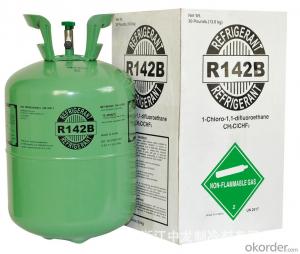Refrigerant Gas R125a
- Loading Port:
- Shanghai
- Payment Terms:
- TT OR LC
- Min Order Qty:
- -
- Supply Capability:
- 1000MT m.t./month
OKorder Service Pledge
OKorder Financial Service
You Might Also Like
Specifications
1.OEM is accepted
2.Delivery time:15 days
3.Good service after sale
4.competitive price in this line
Refrigerant, it is an important component of mixed working substance, and can replace R502 and R22. Used as fire-extinguishing agent, can replace Halon1211 and Halon1301.
Property of chloride
Formula: CHF2CF3
Molecular weight: 120.0
B.P.,°C: -48.3
Critical temperature,°C: 66.05
Critical pressure, MPa: 3.59
Critical density, g/cm3: 0.571
Liquid density, 25°C,g/cm3: 1.19
Vaporization heat at B.P., KJ/Kg: 165
ODP(CFC-11=1): 0
QWP(CO2=1): 3500
Quality standard
Appearance: Colorless, no turbid
Odor: Odorless
Purity, ≥%: 99.8
Water, ≤%: 0.001
Acidity, ≤%: 0.0001
Residue on evaporation, ≤%: 0.001
Packaging & Delivery
| Packaging Detail: | 800kg, 1000kg, ISO tank. |
| Delivery Detail: | 15days |
- Q: Ionic compounds, covalent compounds, electrolytes, non-electrolytes, which are both compounds and inorganic compounds
- An ionic compound consisting of a cation and an anion. Active metals (such as sodium, potassium, calcium, magnesium, etc.) and active non-metallic (such as fluorine, chlorine, oxygen, sulfur, etc.) when the combination of active metal loss of electrons to form positively charged cations (such as Na +, K +, Ca2 + (Such as F-, Cl-, O2-, S2-, etc.), cations and anions are formed by electrostatic interactions to form ionic compounds. For example, sodium chloride is an ionic compound consisting of positively charged sodium ions (Na +) and negatively charged chloride ions (Cl-). Many bases (such as NaOH, KOH, Ba (OH) 2, etc.) and salts (such as CaCl2, KNO3, CuSO4, etc.) are ionic compounds. The total number of positive charges in the cationic compound is equal to the total number of negative charges carried by the anion, and the whole compound is electrically neutral. Most ionic compounds can not be conductive in solid (or crystalline), while their aqueous or molten state can be conductive. The ionic compounds generally have a higher melting point and higher boiling point, higher hardness, crisp and difficult to compress, and the highly volatile ionic compounds are linked by ionic bonds, without independent structures, such as sodium chloride.
- Q: What is the hydrocarbon thing
- Hydrocarbons can be divided into: open chain hydrocarbons (carbon atoms in hydrocarbon molecules in open chain) - saturated hydrocarbons - alkanes - unsaturated hydrocarbons - olefins and polyolefins (carbon - carbon double bonds, unstable) - alkynes and (Cyclopentane) - cycloalkene - cycloalkyne aromatic hydrocarbon - monocyclic aromatic hydrocarbon (benzene and its homologues) - fused ring aromatic hydrocarbons (Polycyclic aromatic hydrocarbons and their homologues) - polycyclic aromatic hydrocarbons (naphthalene, anthracene and other condensed ring aromatic hydrocarbons and their homologues) all hydrocarbons are hydrophobic, that all the hydrocarbons are not soluble in water and coal The main ingredients are hydrocarbons
- Q: Why does the molecular atom compound do not belong to the life structure
- Life structure is composed of CHO as the main element through the covalent bond of the combination of hydrocarbons and their derivatives, and you said the molecular atomic compounds are usually atomic or ionic bond
- Q: Sugar, fat, and so on a variety of organic matter is full of different units of the heat of the small box. (Save the heat the most efficient, the least loss of heat the most practical and most economical box).
- Understand enough messy
- Q: Is polyethylene a derivative of hydrocarbons?
- No, the derivative of the hydrocarbon is an element other than c.H
- Q: Is the system name of a hydrocarbon derivative named if the question can be named according to the nomenclature of the alkane?
- Halogen can be named after the alkane, the other can not
- Q: What is the definition of organic matter
- Organic matter usually refers to carbon-containing compounds, or hydrocarbons and their derivatives are collectively referred to as organic compounds.
- Q: The aromatic hydrocarbon derivative refers to monocyclic or polycyclic
- To see what is the derivative of aromatic hydrocarbons, by its own is a single ring or multi-ring decision
- Q: Is the heterocyclic compound not a derivative of cyclic hydrocarbons? why?
- The heterocyclic compound is an organic compound containing a heterocyclic structure in its molecule. The atoms that make up the ring contain at least one heteroatom in addition to carbon atoms. The heteroatoms include oxygen, sulfur, nitrogen and the like. Theoretically, the heterocyclic compound can be regarded as a derivative of benzene, that is, one or more CH in the benzene ring is replaced by a heteroatom. The heterocyclic compound may be in parallel with the benzene ring to form a fused ring heterocyclic compound.
- Q: What is the aromatic hydrocarbon .. what is the derivative of the aromatic hydrocarbon
- Aromatic hydrocarbons referred to as "aromatic hydrocarbons", refers to the molecule containing benzene ring structure of the hydrocarbons. Is a closed chain.
Send your message to us
Refrigerant Gas R125a
- Loading Port:
- Shanghai
- Payment Terms:
- TT OR LC
- Min Order Qty:
- -
- Supply Capability:
- 1000MT m.t./month
OKorder Service Pledge
OKorder Financial Service
Similar products
Hot products
Hot Searches
